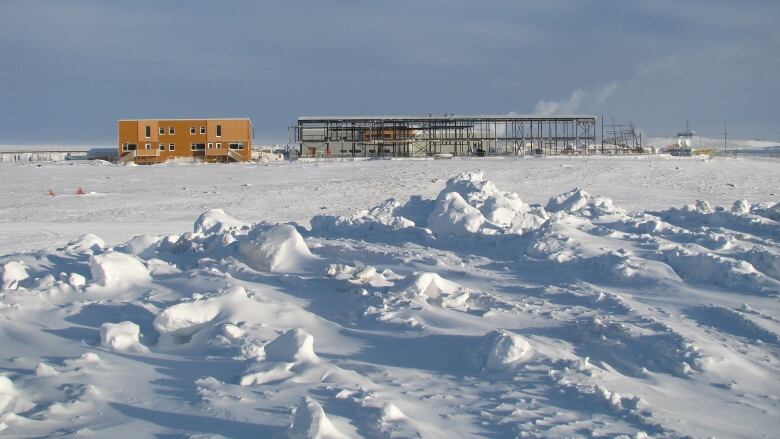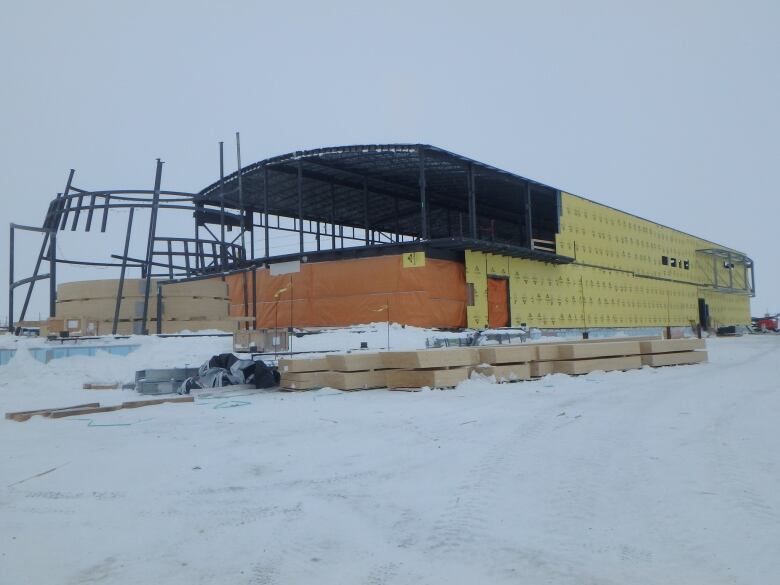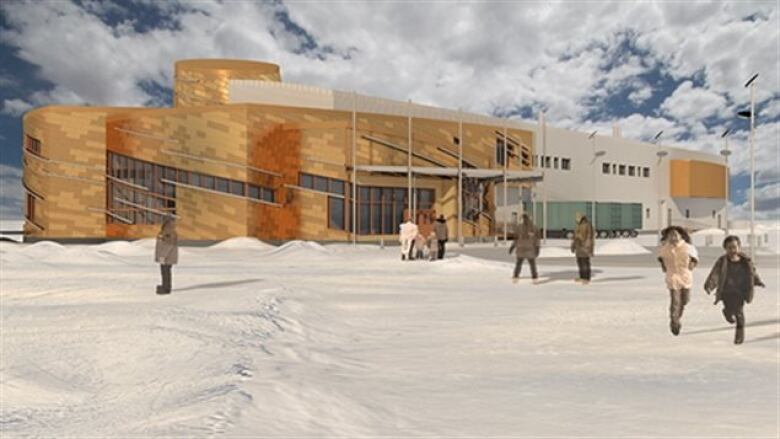Memo shows feds concerned QEC not ready to power High Arctic Research Station by 2017
Agreement eventually reached between INAC and QEC on Cambridge Bay electricity

An agreement between the federal government and Nunavut's electricity corporation settles any lingering concerns over how topowera $250-million Arctic research station in time for its opening, says theCanadian High Arctic Research Station'schief engineer.
The research station iscurrently under construction in Cambridge Bay, Nunavut, where it is expected todouble the power requirements in the community of 1,700.
- High Arctic Research Station focus shifts to climate change
- Arctic research station design incorporates Inuit knowledge
- Cambridge Bay gears up for new High Arctic research station
The agreement signed in March comes after the Canadian government had concerns about the ability of Nunavut's electricity corporation topowerCHARS.
At standard electricity rates set by the QulliqEnergy Corporation, CHARS's annual energy bill is estimated at $900,000.
And though QEC originally said powering the research station would be "no issue," aNovember 2015 memo between a director with Public Service and Procurement Canada and the department's associate deputy minister highlightsQEC's "lack of capacity" to powerCHARSby the 2017 deadline.

"Through early discussions with QEC theCHARSproject team was made aware of a planned upgrades and relocation of the Cambridge Bay power plant; QEC indicated at that time there would be no issues in servicingCHARSin 2017," wrote Steve Kelly, the regional director general for the western region with Public Service and Procurement Canada, to the department's associate deputy minister.
The memo was obtained by CBC News under Access to Information.
Upgrades years away
It's not clear if the federal government anticipated the upgrades would be complete in time for the opening of the research station.A spokesperson with QEC said the energy corporationis planning to build a new power plant inCambridge Bay but the project is in initial stages.
According to the memo, the federal government was informed it would still be years before the upgrade would take place.
"In August 2015, QEC advised the project team that the planned upgrades were still seven years away and the planned load for theCHARSwould exceed QEC's capacity it is estimated that theCHARSwill nearly double the power consumption in Cambridge Bay," Kelly wrote.
Earlier this year QECissued a request forproposal for a geotechnical evaluation for a $2 million modular power plant for Cambridge Bay to cover the additional power requirements ofCHARS.
Prior to issuing the proposal and according to the memo QEC had asked the federal government for about $2.5 million to help cover the costs to powerCHARS.
According to Kelly, QEC asked Indigenous and Northern Affairs Canada (INAC), the federal department responsible for construction of the station, to sign the agreement by September 2015, in time to ensure the generator could makeit way north by sealift.
Kelly informed the associate deputy minister INAC was not ready to sign the agreement as it's "exploring other options" including instructingCHARS'sdesign consultant to come up with an interim power solution.
"INAC's objective is to integrate seamlessly into the community, including not causing brown outs or utility cost increases as a result of the new Crown facility," Kelly wrote.
Agreement reached
Since the November memo, INAC has signed a memorandum of understanding between itselfand QEC, setting out that the energy corporation will be responsible to meet the energy needs of CHARS.
"Our focus is ensuring that our requirements will be met and through our work with Qulliq Energy. We have those assurances now," said Matthew Hough, the chief engineer of CHARS.
"If needed, we would ensure our requirements would be met but it's always been our approachto integrate into the community."

Part of the agreement between INAC and QECincludes a $500,000 contribution by the federal department towardupgrading generation capacity in the town and $175,000 towarda new transmission line from the power plant to CHARS.
The final part of the agreement will allow QEC and INAC to work together on future energy infrastructure needs in Cambridge Bay.
"That could include energy conservation, energy use, emission studies, community educationinitiatives and sustainable and alternative energy generation," Houghsaid.













_(720p).jpg)


 OFFICIAL HD MUSIC VIDEO.jpg)
.jpg)



























































































